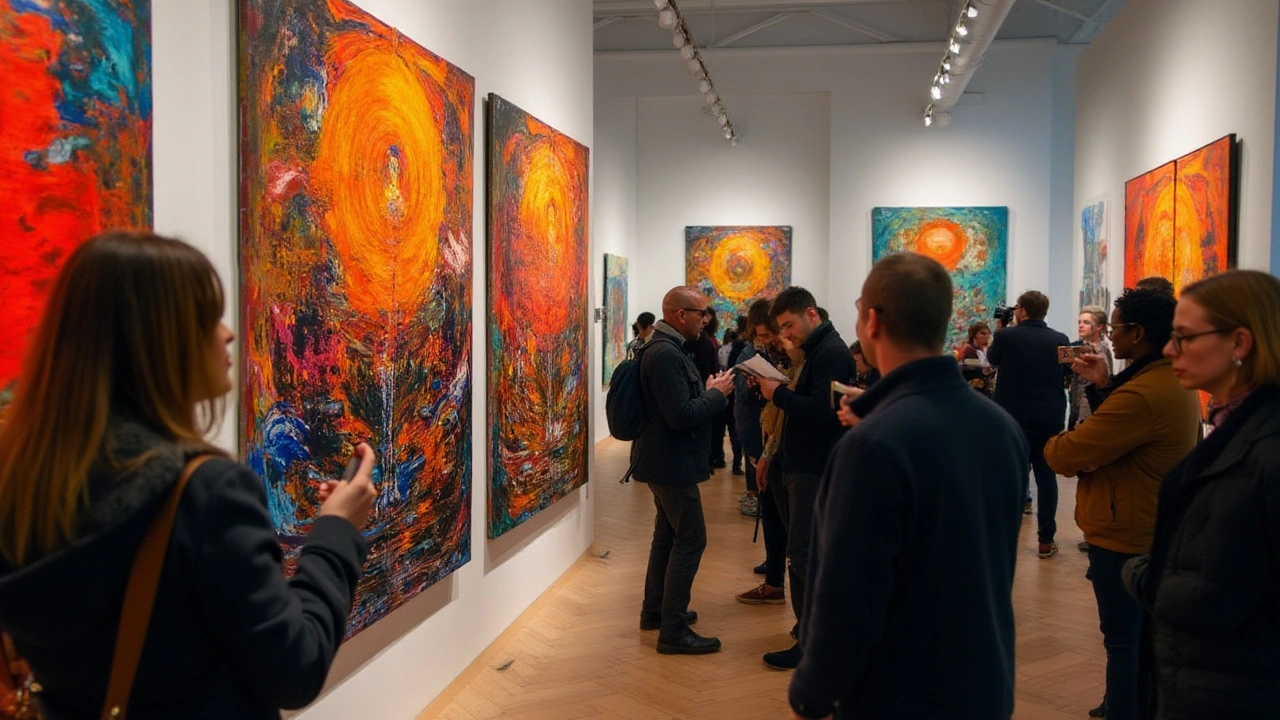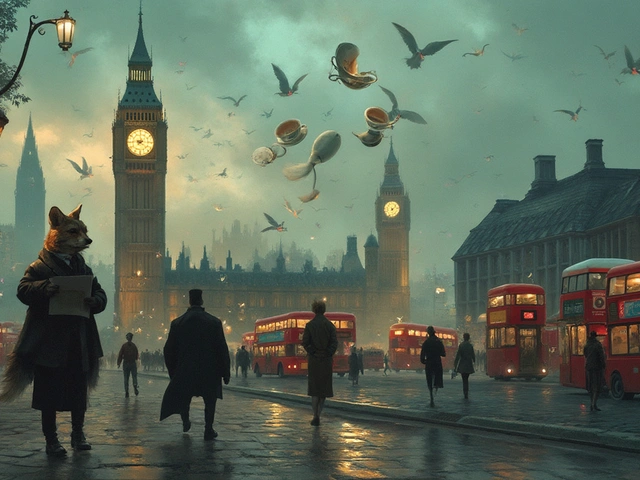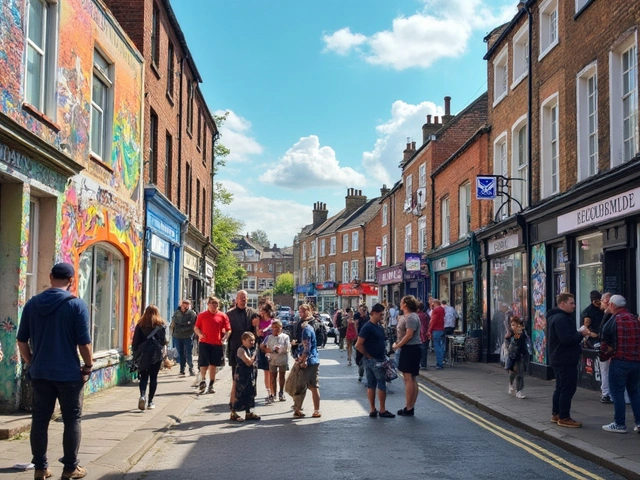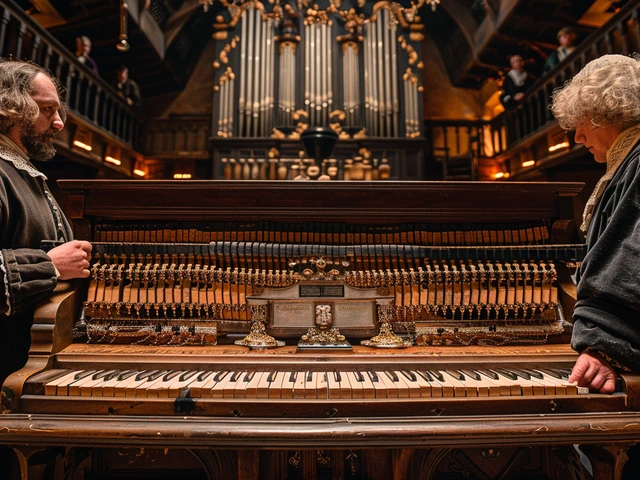Abstract Expressionism is more than just an art movement; it's a heartfelt tale of human emotions splashed across canvases during a time of profound change.
In the mid-20th century, artists began seeking new ways to express their inner turmoil and passion. Stepping away from traditional methods, they embraced abstraction, allowing their feelings to dictate form and color.
This movement wasn't about structured rules or detailed depictions. Instead, it offered artists a liberated space to communicate their deepest emotions. Figures like Jackson Pollock and Mark Rothko revolutionized how art was perceived, creating works that were raw, powerful, and deeply personal.
Join us as we explore the vibrant journey of Abstract Expressionism – its roots, its main players, its unique styles, and its lasting legacy.
Origins and Background
Abstract Expressionism began in the United States in the 1940s and 1950s. It was a time when the world was recovering from World War II, and society was shifting dramatically. The traditional forms of art that once defined beauty were no longer adequate to express the complexities and anxieties of the modern world. Artists felt a profound need to break away from conventional techniques and explore new ways of visual storytelling that resonated with their inner feelings.
The movement marked a significant shift from Europe to America as the epicenter of the art world. Many artists fled the war-torn continent and found a new home in New York City. This bustling metropolis provided fertile ground for experimentation and collaboration. Figures like Jackson Pollock, Willem de Kooning, and Mark Rothko began to rise, each bringing their unique perspective to the burgeoning movement. Their art was characterized by a sense of spontaneity, emotional intensity, and an emphasis on the act of painting itself.
A noteworthy point in abstract expressionism was its rejection of literal representation. Instead, artists focused on conveying the raw emotion and psychological depth. A canvas became more than just a surface; it was a field for passionate, unfiltered expression. They wanted viewers to feel something profound, to experience the emotional journey that led to the creation of each piece.
The post-war era brought with it a sense of existential dread and uncertainty. The horrors of conflict and the looming threat of nuclear annihilation weighed heavily on the collective consciousness. Abstract Expressionism became a way for artists to communicate their angst and their hope. Harold Rosenberg, a famous critic, called this approach "action painting," emphasizing the dynamic, almost theatrical process of creating art. He described it as a way of turning painting into an existential encounter.
"The canvas began to appear to one American painter after another as an arena in which to act," Rosenberg wrote, capturing the essence of the movement's freewheeling spirit.
During this period, art shifted from focusing on the object to focusing on the artist. This change heralded a new era where personal expression took precedence over formal technique. Paint splatters, bold markings, and significant swaths of color became emblems of Abstract Expressionism. The movement rejected the perfection of form and embraced imperfections and unpredictability. This artistic freedom mirrored the societal transformations happening at the time, including shifts in cultural norms and political ideologies.
A crucial aspect of the movement was its diversity. While united under the banner of Abstract Expressionism, the artists were incredibly unique. Some, like Pollock, embraced chaotic energy, creating his famous "drip paintings" by flinging paint onto canvases. Others, like Rothko, pursued a more meditative approach, layering translucent colors to evoke deep emotional responses. This variety allowed the movement to explore a broad spectrum of human emotions—from rage and sorrow to peace and contemplation.
This period also saw the rise of influential art institutions in the United States. Museums and galleries flourished, providing platforms for artists to showcase their innovations. The Museum of Modern Art (MoMA) and The Guggenheim became central hubs for this new wave of art. They organized exhibitions that not only highlighted the movement but also fostered dialogue among the artists.
The roots of Abstract Expressionism are deeply entwined with the social and political changes of the times. Understanding where it came from helps us appreciate the raw, emotional power it brings. It's not just about color and technique; it's about a transformative journey through the hearts and minds of the people who lived through one of the most tumultuous periods in modern history. The movement continues to impact contemporary art, embodying the perpetual search for meaning and connection in an uncertain world.
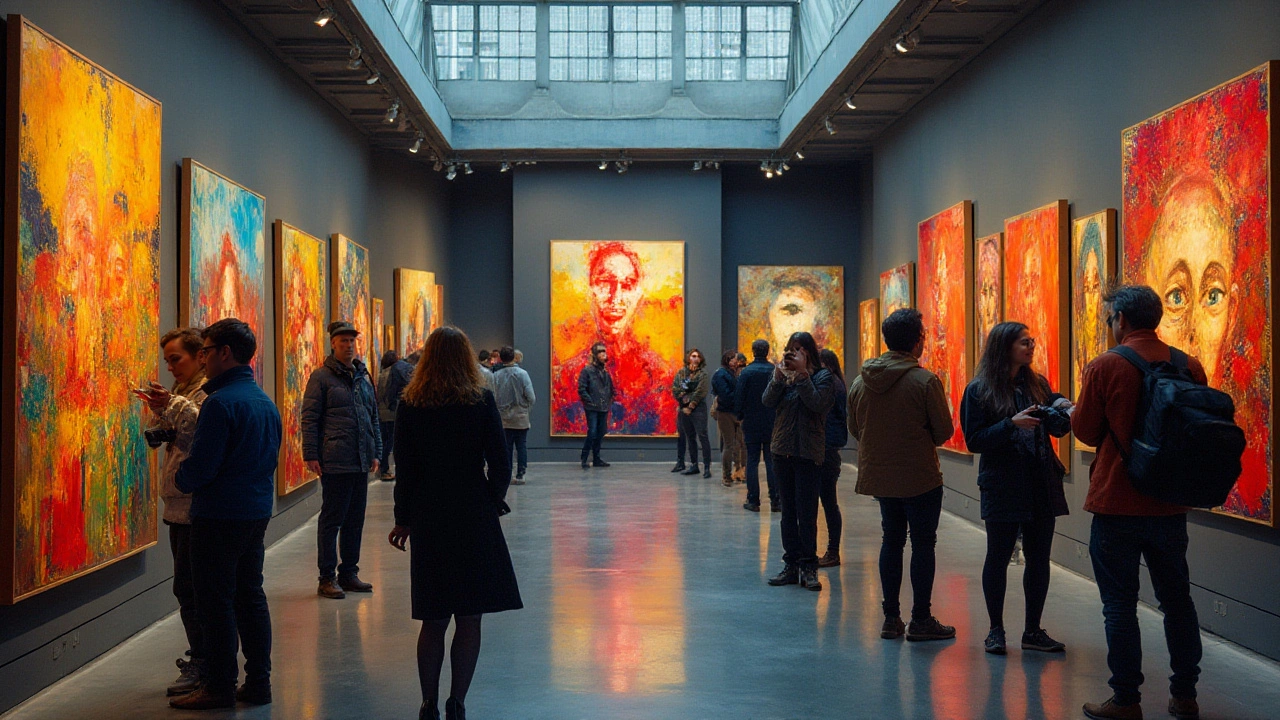
Key Artists
When you think about Abstract Expressionism, certain names immediately come to mind. These artists didn't just contribute remarkable works; they also defined the movement itself.
Jackson Pollock is perhaps the most iconic figure. Known for his unique drip painting technique, Pollock's work shunned the easel and conventional tools. Instead, he placed his canvases on the ground, pouring and splattering paint from all angles. His intense and random application reflected deep emotional currents. One of his famous quotes explains: “I have no fear of making changes, destroying the image, etc., because the painting has a life of its own.”
Another giant of the movement is Mark Rothko. Unlike Pollock, Rothko's art invites reflection with its meditative and expansive color fields. His large rectangular blocks of color encourage viewers to get lost in the artwork, often experiencing a profound emotional connection. Rothko himself said, “Art to me is an anecdote of the spirit, and the only means of making concrete the purpose of its varied quickness and stillness.”
Willem de Kooning also deserves a mention. With his fierce brushstrokes and complex compositions, de Kooning explored the human form in ways no one had seen before. His series of “Women” paintings are particularly famous, mixing abstraction with figuration, often in a chaotic, yet controlled style that spoke to post-war anxieties.
Helen Frankenthaler brought another dimension to the movement. Her soak-stain technique, where she poured thinned paint directly onto untreated canvases, created luminous washes of color. This approach led to the Color Field painting sub-genre and influenced countless other artists, making her a pioneering figure.
Finally, there is Franz Kline, who is celebrated for his stark and powerful black-and-white compositions. Using house paint and large brushes, Kline's work is characterized by bold, sweeping strokes that exude raw energy. His works often convey a sense of urgency and movement, emphasizing the dramatic and expressive potential of abstract forms.
Together, these key artists carved out a space where art became a vehicle for expressing the depth of human emotion. Their innovative techniques and fearless exploration of abstract forms continue to inspire and captivate audiences around the world.
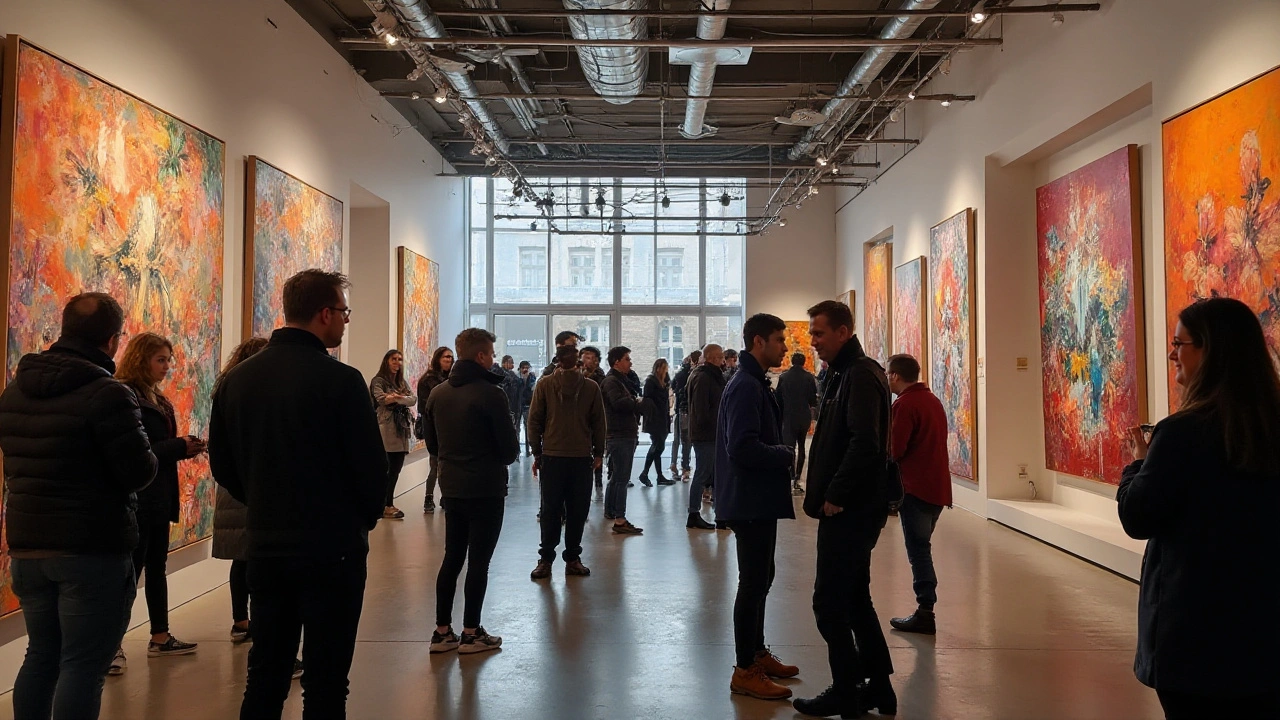
Styles and Techniques
Abstract Expressionism is known for its diverse range of techniques and styles, each of which brought a unique flavor to the movement. This era in art wasn't confined to a single approach but was rather a melting pot of different methods, each aiming to express deep emotional and psychological states.
One of the most iconic techniques is Action Painting. This style involves spontaneous, physical gestures to apply paint to the canvas. Jackson Pollock is perhaps the most famous artist associated with action painting. He would drip, fling, and splatter paint from above the canvas, creating a dynamic, almost chaotic composition. His work was less about depicting a subject and more about capturing the action of painting itself. Pollock famously said, "I prefer to let something happen rather than controlling it."
"The modern painter cannot express this age—the airplane, the atom bomb, the radio—in the old forms of the Renaissance or any other past culture. Each age finds its own technique." - Jackson Pollock
Another significant technique within Abstract Expressionism is Color Field Painting. In contrast to the energetic gestures of action painting, color field painting involves large, flat areas of color spread across the canvas. Mark Rothko, a pioneering figure in this style, believed that color could convey complex emotional states. He carefully layered hues to create transcendent, meditative spaces. Rothko's works often feature soft edges and subtle transitions between colors, inviting viewers to lose themselves in the vast, immersive fields of color.
Despite their differences, both styles were united by a shared emphasis on the emotional and psychological experience of the viewer. These artists sought to evoke feelings rather than represent reality. The focus was on the internal rather than the external.
There's also the technique of Impasto, where thick layers of paint are applied to the canvas, creating texture and depth. Artists like Willem de Kooning employed this method to give their works a raw, tactile quality. The heavy application of paint allows viewers to see and even feel the artist's movements, making the creative process itself an integral part of the artwork.
It's fascinating to note that these techniques inspired countless other movements and artists. The abstract approach allowed for experimentation without the confines of traditional composition. Everyday tools and unconventional mediums found their way into art studios, bringing about a fantastic departure from convention.
Table illustrating some key techniques and their prominent artists:
| Technique | Prominent Artist |
|---|---|
| Action Painting | Jackson Pollock |
| Color Field Painting | Mark Rothko |
| Impasto | Willem de Kooning |
Through these varied approaches, Abstract Expressionism carved out a new realm in the art world, emphasizing the importance of the artist's personal journey and the viewer's emotional response. This movement showed us that art is not just a visual medium but a vehicle for personal and emotional expression.
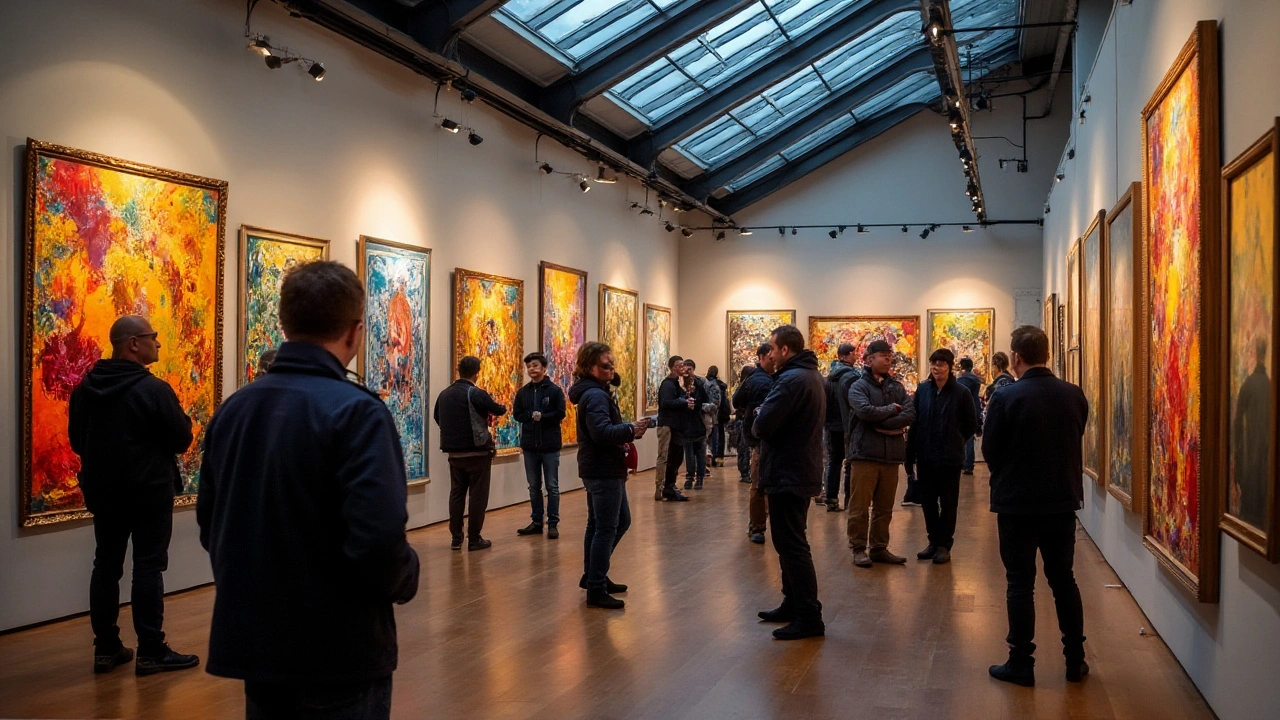
Impact and Legacy
Abstract Expressionism left a significant mark on the modern art world, echoing its influence long after the initial buzz faded. The shift towards a more expressive and emotional style opened doors for future generations. Museums and galleries today still celebrate these trailblazers, showcasing their works as priceless collectibles. This art movement stirred the pot, challenging traditional notions and ideas of what art should represent.
Before this movement, art often leaned on realism heavily. Abstract Expressionism, on the other hand, reached out to the viewer's emotions, tapping into the subconscious. This allowed for a more personal connection to the pieces. It emphasized the importance of individual experiences, transforming the way artists and viewers interact with art. Thanks to the bold, unrestrained techniques, art became a mirror reflecting the human spirit in all its raw complexity.
The movement also spurred the growth of the New York art scene, shifting the art capital from Paris to New York in the mid-20th century. This was a monumental change. Artists like Jackson Pollock and Willem de Kooning found a community that supported pushing the boundaries. Even institutions like the Museum of Modern Art and the Metropolitan Museum of Art began to recognize and celebrate these avant-garde artists. They were no longer confined to the fringes but were acknowledged as key influencers.
| Artist | Key Contribution |
|---|---|
| Jackson Pollock | Revolutionary drip painting technique |
| Mark Rothko | Large, contemplative color fields |
| Willem de Kooning | Blend of abstraction and recognizable forms |
Abstract Expressionism’s impact isn’t limited to galleries and museums alone. The movement inspired various aspects of popular culture, from graphic design to film. Directors and designers borrowed its bold, emotional styles to convey complex narratives. Additionally, this art movement breathed new life into art education. Art schools worldwide began prioritizing creative freedom, allowing students to embrace their emotional expressions fully. This shift can still be seen in contemporary art programs.
As art critic Clement Greenberg once said, "Pollock’s art, like that of most first-rate original artists, becomes the field day of knowledge and ceases to be itself."
Global Influence
Globally, Abstract Expressionism resonated far and wide. Artists in Europe and Asia began experimenting with expressive techniques, melding them with their cultural traditions. This overlap created unique fusion styles, transcending national borders. The movement also laid the groundwork for future art movements like Minimalism and Conceptual Art. These subsequent movements found their roots in the emotional freedom advocated by Abstract Expressionists.
From the bold strokes of Pollock’s canvases to the vast color fields of Rothko, Abstract Expressionism’s legacy is a testament to the unyielding power of human emotion in art. Its influence endures, inspiring new generations of artists to explore the labyrinth of the human spirit without restraint.

